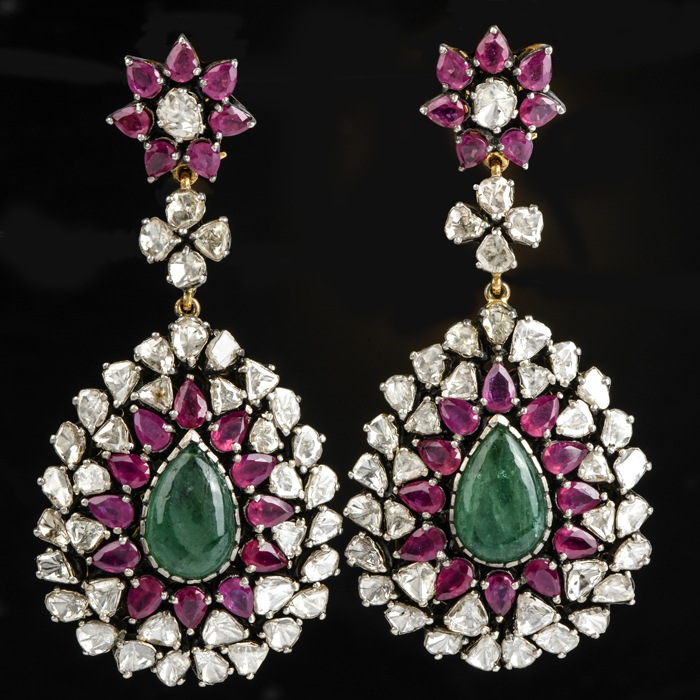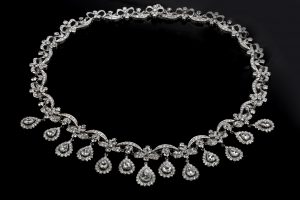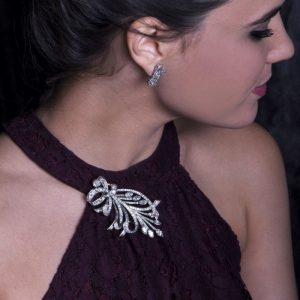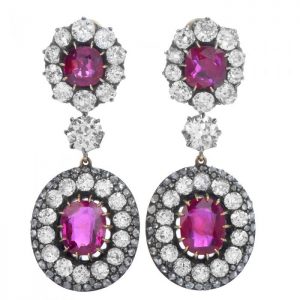
Named after the British King Edward VII, the Edwardian era lasted from 1900- 1915, and it was a time of great prosperity for the ruling classes in England.
If you are a fan of ‘Downtown Abbey,’ you will appreciate how well the landed gentry in England were able to live that time. The family of the 7th Earl of Grantham had a large staff of servants who practiced their own class system below stairs. The Earl inherited a huge estate as part of the famed Downton Abbey. Its rooms were too numerous to count.
Class divisions were pre-determined at that time, and if you were born into a working-class family, your future was irreversibly set. For example, the ill-fated Titanic offered no fewer than three levels of cabins for passengers, depending on their status – plus rough steerage passage in the bowels of the ship for the poorer immigrant laborers looking for a better life in America.
Jewelry Equals Status
Jewelry and fashion at that time served to reinforce the class divide – and Edwardians loved to display their wealth in exquisite diamonds, pearls and stately tiaras. It was a way to show their importance in society, and to distinguish themselves from the lower classes. Jewelry advertised not only the might of the British Empire but also the importance of the wearer. For example, it was considered bad manners for a woman to wear a taller tiara in the presence of a woman with a higher status in society. Everyone was expected to understand – and accept – his or her place.
Advances in Jewelry Design
Advances in the use of platinum at that time brought about new designs in jewelry. In 1903, the invention of the oxyacetylene torch meant that jewelry could be made from platinum alone. Edwardian pieces are lighter, more feminine, more intricate with delicate filigree work which resemble embroidery, honeycomb or diamond-encrusted lace. You will often see ‘millegraining” in Edwardian jewelry, which features a border of delicate balls and ridges surrounding a central gemstone. It is a much softer look than found in previous eras.
Types of Edwardian Jewelry
What else was popular? Garlands, ribbons, wreaths, imposing tiaras, so-called ‘dog collar’ necklaces, bowknots and tassels. An abundant supply of diamonds had been discovered in South Africa in the 1880’s and the British aristocracy loved to show their wealth by wearing glittering white diamonds and pearls set in platinum.
- Necklaces were becoming more important as women’s fashions began to change.
Here is an exquisite Edwardian Style Diamond Drop Bow Necklace, which features thirteen pear-shaped rose-cut diamonds, weighing 6.80 carats.
- Simple chains with a pendant were popular, as were double pendant asymmetrical lavallières. Long ropes of pearls or beads with tassels were also the rage.
- Larger pendants were round with geometrical or garland motifs. Typical of the period is Dover’s dazzling Edwardian 8.4 carat diamond cross pin pendant set in platinum. At its center is an old cut diamond surrounded by a scroll of pavé set old cut diamonds. It can be worn either as a pin or a pendant.
- Perhaps nothing represents Edwardian-era jewelry more than long, glittering earrings. They featured the typical Edwardian style elements of large feature center stones surrounded by diamonds. Although the jewelry of the time was mostly all-white, many pieces were punctuated by brightly colored center stones, such as Kashmir sapphires, Burmese rubies and Colombian emeralds.

Our magnificent Edwardian ruby and diamond flower earrings feature four no-heat prong-set cushion and oval cut natural Burmese rubies weighing 7.7 carats, with two old-cut diamonds weighing approximately 2.4 carats. They have clip-on backings and posts for pierced ears. These are exceptional earrings, representing an important addition for a serious collector.
Prices for quality Edwardian jewelry have increased dramatically in recent years and it is proving to be an excellent investment over the long term. Whether you see it as an heirloom to pass on to your children, or you just appreciate its extraordinary beauty and wear it on special occasions, Edwardian jewelry has taken center stage since ‘Downtown Abbey’ first aired in 2010.


